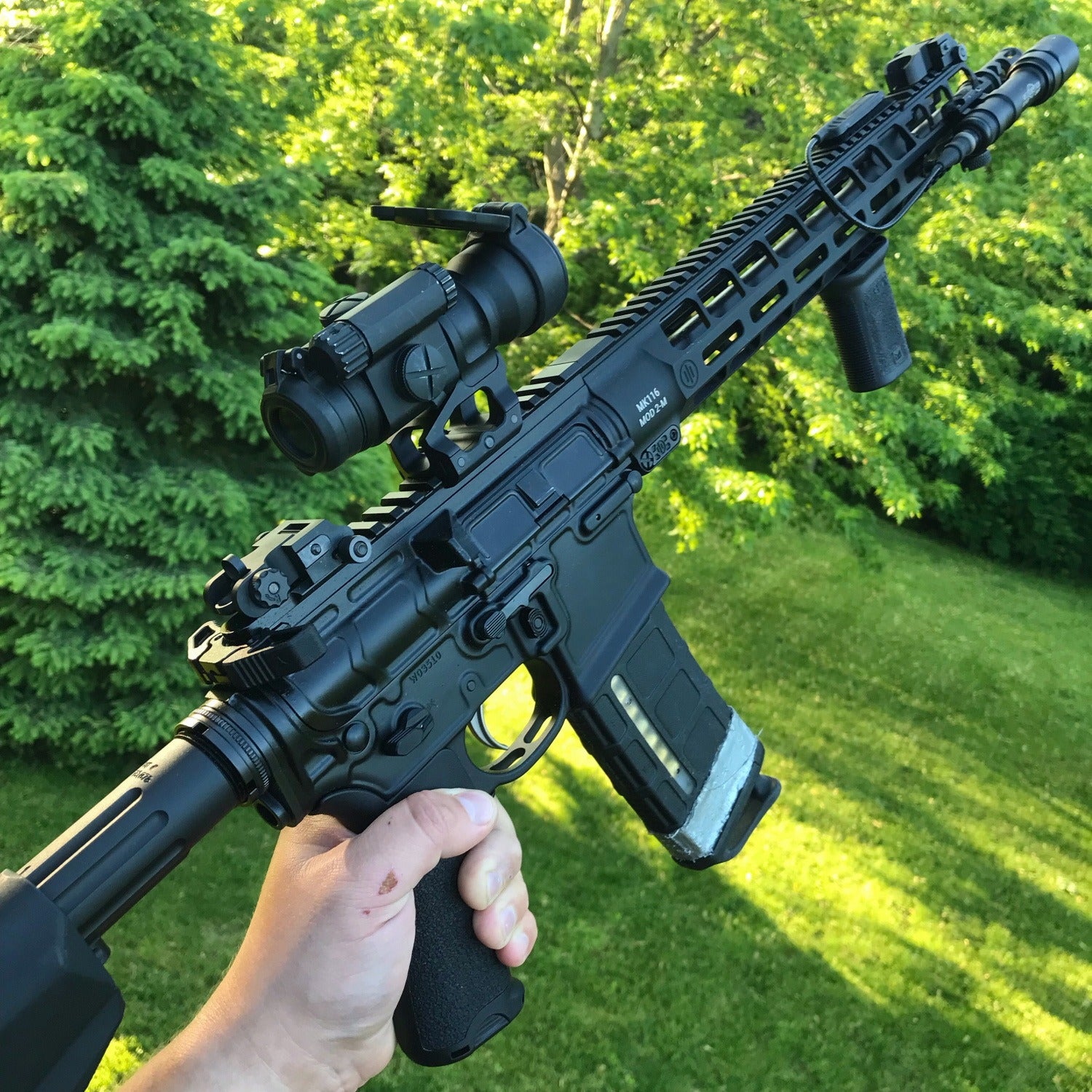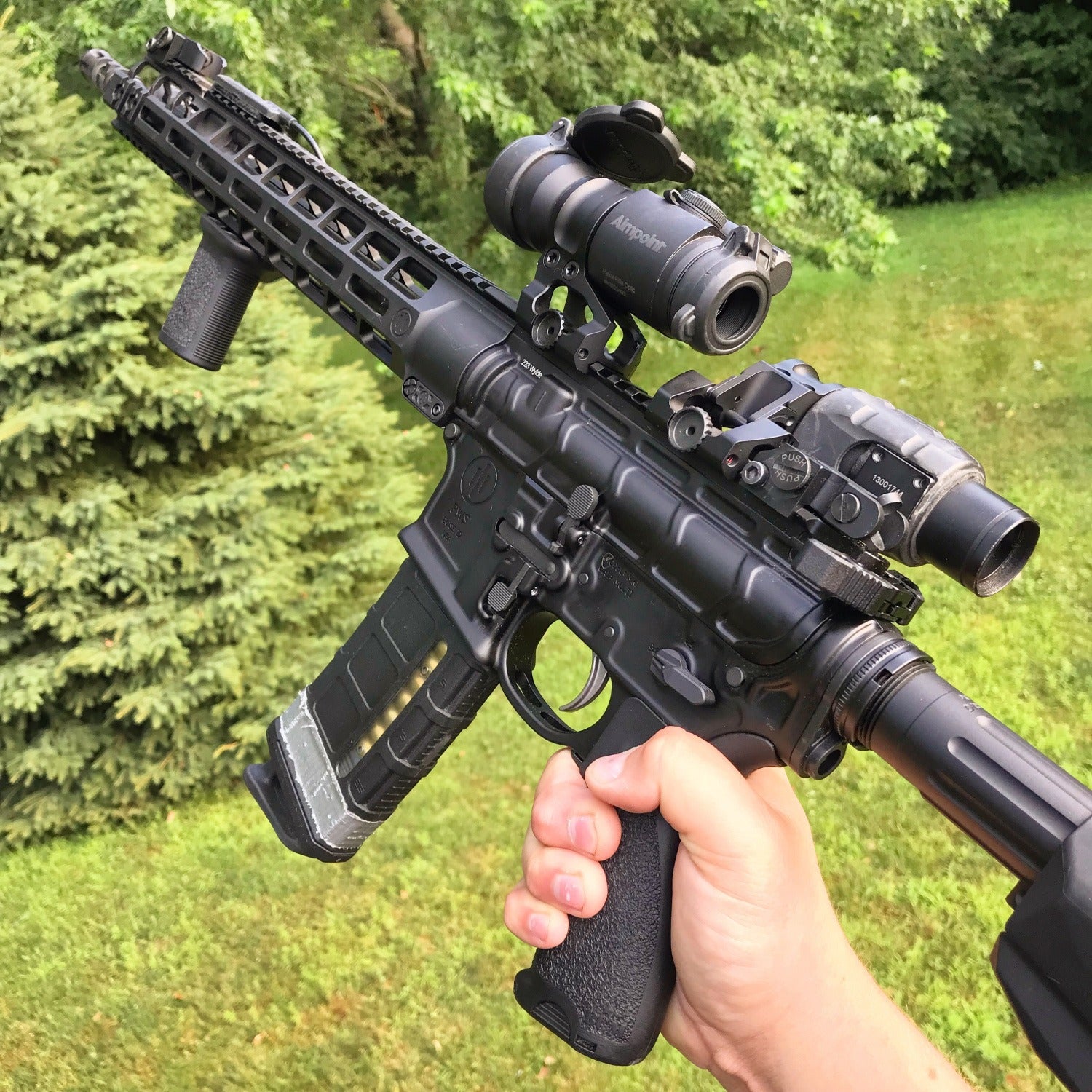With a growing number of companies making different types of fixed iron sights, I’ve been getting a ton of questions on what’s best. Some say red dot only is best while others say having fixed or back up irons to co-witness with are great too. Both styles have their advantages depending on what your needs are out of your gun. Let’s jump into what the difference is between the two systems and why they both have advantages.

Red Dot Only
Running red dots without any iron sights can be a great way to train. It gets rid of everything cluttering up your field of view in the optic and simplifies what to look at. Having one crisp dot to look at vs multiple shapes can be faster and much easier for shooters transitioning quickly when looking for targets. Adding an anti-glare system into the mix like the Aimpoint honeycomb system can make the optic look even busier so it may be easier to run just a red dot.

There are different mount styles and heights that don’t always match up to your fixed iron sights. Lower 1/3 co-witnessing works but can be confusing when you’re under stress. With higher mounts like the various 1.93 mounts, that will not work with any iron sights because of the height of the mount. Certain shooters love the taller mounts because it gives them a most consistent hold on their gun with a chin weld.
I am not one of these guys but I’ve met them and get where they are coming from. The best thing about red dot only vs having iron sight is also the worst. It’s great to not have clutter or a busy field of view when looking through the optic but red dots only have one reference point. It’s very possible to accidentally throw a shot because your hold or shooting pattern has changed where it’s not as easy with iron sights.

Iron Sights and Co-Witnessing
With the extra bit of clutter, running with iron sights can offer a great lever of consistency and stability to your shooting. Using a set of fixed front and rear sights will give you more reference points to look at versus one dot you can rely on in a different reference point than you originally planned on. Being able to line up both the front and rear with a traditional dot is reassuring I have the same reference point every time without wondering if I changed my cheek hold on the gun. Another benefit of having either fixed or backup iron sights is being ready in case something happens to your red dot.

Now, this doesn’t usually happen with people who lightly use their equipment. Chances are though if you’ve taken a training course where you’re using a red dot, you’ve seen someone’s optic go down for one reason or another. Whether it’s a battery dying, or an optic completely shutting off, things do happen occasionally and it’s important to have a backup plan. If your optic dies or decides to fail when you’re shooting with irons this goes from a game over scenario to an easy transition to iron sights.

Overall Thoughts
Personally, I think there is a spot for both styles when building a rifle. I used to like having the field of view clear of everything to see what’s around, but lately, I’ve switched to co-witnessing with iron sights. I have more consistent shots with having three reference points rather than just one with a red dot. Everyone is different though so I’d love to hear what you have to say. Let me know what you guys prefer in the comments below. If you have questions feel free to message me on Instagram @fridgeoperator. Stay safe out there!
We are committed to finding, researching, and recommending the best products. We earn commissions from purchases you make using the retail links in our product reviews. Learn more about how this works.
 Your Privacy Choices
Your Privacy Choices
